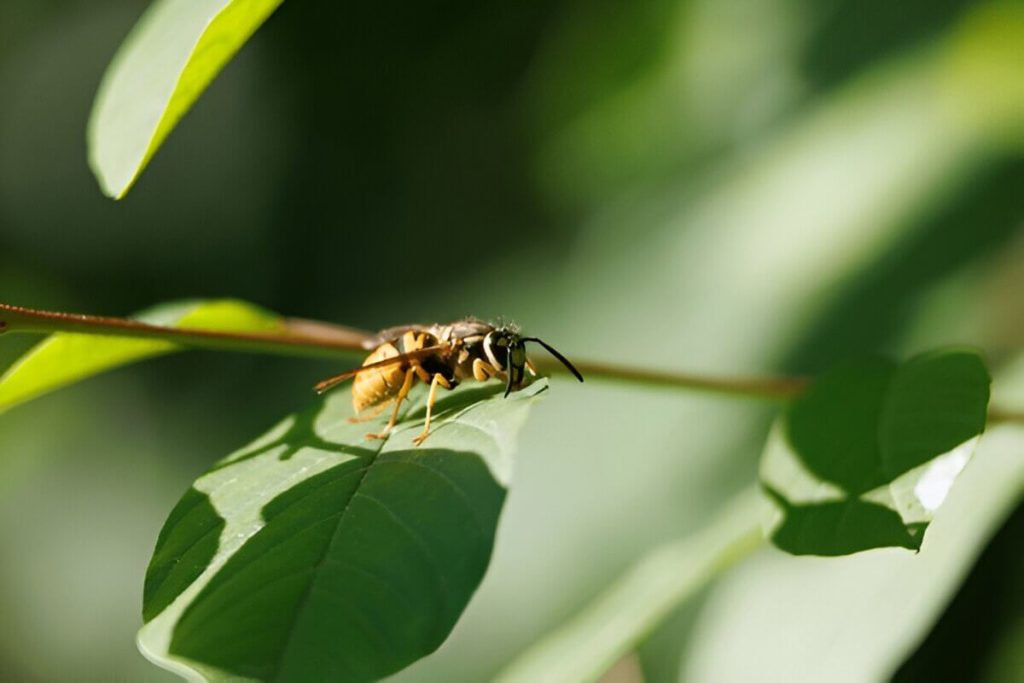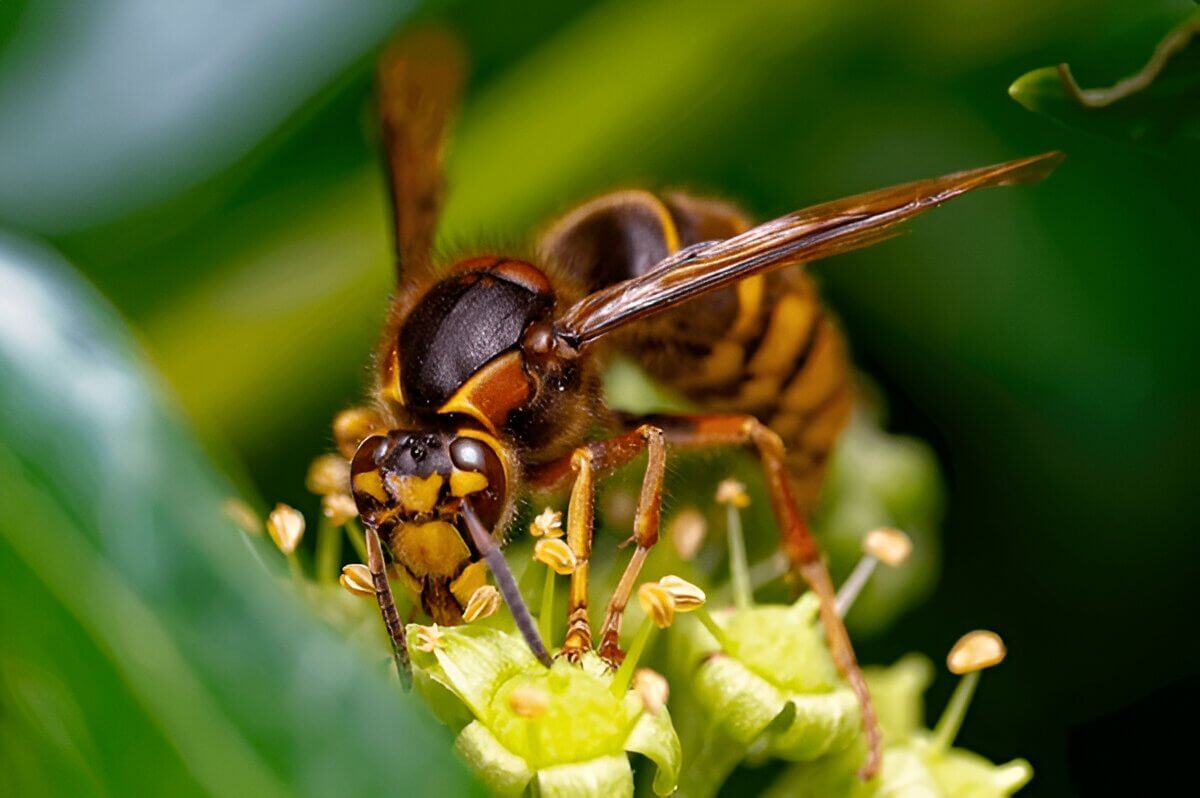Understanding the difference between hornets and wasps is crucial for several reasons, especially when it comes to safety and pest management. While both belong to the Vespidae family, their behaviors, habitats, and potential threats can vary significantly. Knowing how to distinguish between them can help you make informed decisions about how to handle encounters with these insects.
Hornet vs wasp identification often begins with examining size and color. Hornets are generally larger than wasps, with some species like the European hornet reaching up to 1.5 inches in length. They tend to have a more robust body structure compared to the slender build of most wasps. Coloration can also be a clue; hornets typically display a black and white pattern or brownish tones, whereas many common wasps have bright yellow and black markings.
The importance of identifying hornets and wasps extends beyond mere curiosity—it can impact your safety as well as your approach to managing these insects around your home or garden. Hornets are known for being more aggressive when defending their nests, whereas some species of wasps may only sting if provoked directly. By accurately identifying which insect you’re dealing with, you can better assess any risks involved and decide whether professional pest control is necessary.
Learning how to distinguish between hornets and wasps not only enhances your understanding of these fascinating creatures but also equips you with the knowledge needed for effective management and safety precautions in environments where they are present.
How to Tell Hornets Apart from Wasps

When distinguishing hornets from wasps, understanding their physical characteristics is key. One of the primary differences lies in their size. Generally, hornets are larger than wasps, with some species reaching up to 2 inches in length, making hornet size comparison a useful tool for identification. Wasps typically measure around 1 inch or less.
In terms of appearance, both insects possess distinct physical traits that set them apart. Hornets have a more robust and wider body compared to the slender and elongated form of wasps. This difference in body structure can be a quick visual cue when trying to identify these insects.
Color differences also play a significant role in telling them apart. Hornets often display darker hues with black and white or yellow markings, whereas wasps tend to have brighter yellow and black patterns that are more vivid and striking.
Understanding these physical traits can help you accurately differentiate between hornets and wasps, ensuring you know exactly what you’re dealing with when encountering these fascinating creatures in the wild or in your backyard.
Where Do Hornets and Wasps Live?
Hornets and wasps, although often grouped together, exhibit distinct nesting habits that reflect their unique behaviors and environmental preferences. Understanding the differences between hornet nests and wasp nests can provide insights into their ecological roles and how they interact with human habitats.
Hornet nests are typically large, intricate structures made from chewed wood fibers mixed with saliva, creating a papery appearance. These paper nests are usually found in sheltered locations like tree branches, shrubs, or even attics. The nesting behavior of hornets involves constructing these elaborate homes to protect their colony from predators and environmental elements.
In contrast, wasps display a more diverse range of nesting sites and materials. Some species build paper nests similar to hornets but on a smaller scale, often attaching them to eaves or window frames. Others opt for mud as a building material; mud daubers are known for crafting solitary tube-like structures from mud on walls or ceilings.
The choice between paper nests versus mud nests is influenced by the species’ specific needs and the availability of resources in their environment. While both hornets and certain wasp species create communal living spaces that house entire colonies, some wasps prefer solitary nesting habits.
By understanding these differences in nesting sites for wasps compared to hornets, one can appreciate the adaptability of these insects to various environments. This knowledge not only aids in managing potential pest issues but also highlights the fascinating diversity within the insect world.
Behavioral Differences Between Hornets and Wasps
When it comes to understanding the behavioral differences between hornets and wasps, particularly their aggression levels and stinging potential, it’s important to delve into their natural instincts and survival mechanisms. The aggressiveness of hornets versus wasps can vary significantly, influenced by factors such as species type, environmental conditions, and perceived threats.
Hornets are generally more aggressive than wasps. This heightened aggressiveness often stems from their territorial nature; they are quick to defend their nests against intruders. Hornets will not hesitate to sting if they perceive a threat nearby. In contrast, many wasp species tend to be less aggressive unless provoked or directly threatened.
The stinging habits of hornets and wasps also differ in notable ways. Hornets possess a potent sting that can be delivered multiple times without harm to themselves due to the absence of barbs on their stingers. This makes them formidable defenders when they feel endangered. Wasps share a similar capability for repeated stings but may not always exhibit the same level of aggression as hornets unless their nest is disturbed.
Defensive behavior in these insects plays a crucial role in how they interact with humans and other animals. Both hornets and wasps exhibit defensive behaviors when safeguarding their colonies; however, understanding these behaviors can help minimize conflict with them. For instance, avoiding sudden movements near nests or maintaining a respectful distance can reduce the likelihood of provoking an attack.
While both hornets and wasps have the capacity for aggression and multiple stings, recognizing the nuances in their behavior can aid in preventing unwanted encounters and fostering coexistence with these vital members of our ecosystem.
The Roles They Play in the Ecosystem
Hornets and wasps often garner a reputation as mere nuisances or threats due to their stinging capabilities, yet their roles within ecosystems are multifaceted and significant. Understanding the ecological impact of hornets and wasps reveals that these insects contribute positively in various ways. One of their primary benefits is pest control. Wasps are natural predators and help maintain the balance by feeding on other insects, many of which are considered pests to crops and gardens. This predatory behavior aids in reducing the populations of harmful species, thereby supporting agricultural health without the need for chemical pesticides.
Moreover, while they may not be as celebrated as bees, certain species of wasps also play a part in pollination by insects. As they move from plant to plant in search of nectar, they inadvertently transfer pollen, contributing to the reproductive processes of many plants. This role is crucial for maintaining biodiversity and ensuring the survival of numerous plant species.
However, it is important to recognize that hornets and wasps can also pose challenges when their populations become too dense or when they build nests close to human habitation. In such cases, careful management is necessary to mitigate potential risks while still respecting their ecological contributions. Balancing these factors allows us to appreciate both the beneficial aspects and potential downsides associated with hornets and wasps within our ecosystems.
How to Manage Hornet and Wasp Populations Safely
Managing hornet and wasp populations requires a careful approach to ensure safety and effectiveness. Safely removing a hornet nest is crucial, as these insects can become aggressive if they feel threatened. It is recommended to contact professional pest control services, especially for large nests or those located in difficult-to-reach areas. Professionals have the necessary equipment and expertise to handle the situation without endangering themselves or others.
When dealing with a wasp infestation, identifying the type of wasp is important since different species may require specific control methods. For minor infestations, homeowners can use commercial insecticidal sprays designed for wasps, but caution should be exercised to avoid provoking the insects.
Preventative measures for stings are essential in minimizing risks associated with these pests. Keeping food covered during outdoor activities and ensuring trash cans are sealed can deter wasps from frequenting your area. Additionally, sealing cracks and gaps in buildings helps prevent them from nesting inside structures.
By understanding these pest control measures, individuals can manage hornet and wasp populations effectively while prioritizing safety for themselves and their surroundings.
Embrace Coexistence While Staying Safe Around Hornets and Wasps
As we reach the conclusion of our exploration into the world of hornets and wasps, it’s important to recognize the delicate balance between coexistence and safety. These insects, often misunderstood, play a crucial role in our ecosystem by controlling pest populations and pollinating plants. However, their presence can sometimes pose risks to humans, especially for those with allergies or when nests are located too close to human activity.
To coexist safely with hornets and wasps, awareness is key. Educate yourself about their behavior and habitats to avoid accidental encounters. When outside, be mindful of open food containers or sugary drinks that may attract these insects. If you discover a nest near your home or in a high-traffic area, it’s best to contact professional pest control services rather than attempting removal on your own.
Respecting their space while taking necessary precautions can help ensure that both humans and these vital insects thrive together in harmony. By embracing this coexistence with informed caution, we contribute positively to biodiversity while safeguarding our well-being.
